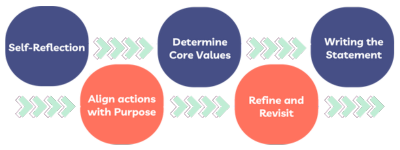The 'Why' Of Leadership
The 'Why' Of Leadership
Author, speaker, and leadership expert Simon Sinek is well recognized for his idea of "Start with Why." Millions of people have watched his T.E.D. Talk, "How Great Leaders Inspire Action," which has motivated people and organizations worldwide.
Sinek emphasizes the significance of comprehending and conveying the "why" behind what we do in his T.E.D. Talk and follow-up book, "Start with Why: How Great Leaders Inspire Everyone to Take Action." Great leaders and organizations, in Sinek's opinion, concentrate on the "why" before addressing the "how" or "what."
According to Sinek, people are inspired by a company's mission statement rather than its products or methods of operation. The "why" stands for the motivational force behind a person or group. It is the more fundamental driver of their behaviour and the origin of their enthusiasm and dedication.
According to Sinek, leaders can instil a sense of purpose and meaning in their teams, consumers, and stakeholders by starting with why. They can increase Engagement, loyalty, and trust because of this strategy. People are more likely to be inspired, in sync, and driven to act when they know why.
The "Golden Circle" model by Simon Sinek exemplifies his idea. Three concentric circles make up the model; the outermost circle symbolizes a company's activities, the middle circle demonstrates how they carry out their operations, and the innermost circle explains why they do it. According to Simon Sinek, starting with the innermost circle—the why—lays the groundwork for all communication and decision-making, which promotes higher success and fulfilment.
How do you create a Personal Purpose Statement presenting your 'Why' as a Leader?

Self-Reflection: Encourage leaders to take time to consider their own personal and professional journeys. They might reflect on crucial occasions, noteworthy accomplishments, and events influencing their ideals and objectives. Explore with them issues like "What genuinely inspires and energizes me?" and "What kind of leader do I want to be."
Determine Core Values: A purpose statement is built on values. Leaders need to understand their core values, the ideas and precepts that direct their actions and choices. Integrity, teamwork, creativity, and social effect are a few examples of fundamental values. Encourage leaders to explore how their personal values fit with their leadership responsibilities.
Writing the Statement: The purpose statement needs to be impactful and concise. Encourage the leaders to compose a statement summarizing their mission. Their basic principles, enthusiasm, and desired leadership influence should all be reflected in the statement. For instance, "To empower others through compassionate leadership and establish a positive, welcoming workplace that promotes growth and innovation."
Align actions with Purpose: Encourage leaders to use their purpose statement as a compass when making decisions and taking actions so that their activities align with their stated purpose. They should frequently consider if their actions and decisions are consistent with their goals. This supports them in maintaining their leadership style's consistency and authenticity.
Refining and Reviewing: regularly revise and reassess your purpose statement. The purpose statement may change over time due to experiences in life, feedback, and personal development.
For more about this topic, download the eBook "Kaleidoscope of Career - Part 1" for FREE:
